Alaska Fish & Wildlife News
August 2023
Know Your Caribou!
Bull or Cow? Test your Skill
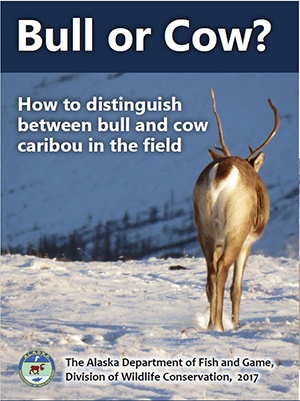
When populations of animals are high and harvest is low, there may be no problem with hunters taking female animals. But when a population is in decline, like the Western Arctic Caribou Herd, it’s important to target bulls for harvest. A reproducing cow only produces one calf per year, but a single bull can breed with many cows. This means more bulls can be harvested from a population without impact to what wildlife biologists call “recruitment,” the number of calves born each year.
Some skill is involved in identifying the sex of caribou. Both males and females have antlers during some of the year, and small bulls and large cows are about the same size. To help hunters make the distinction, the Alaska Department of Fish and Game prepared an online guide and quiz to complement the existing “Bull or Cow?” caribou sex identification guide.
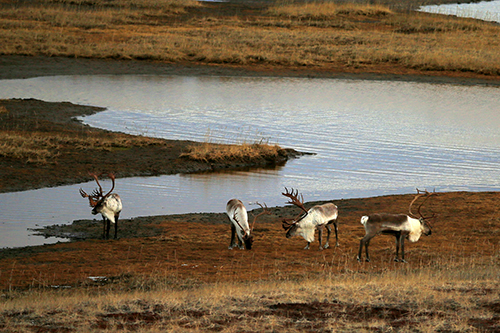
The guide and quiz are similar to other wildlife sex/age guides and quizzes on the ADF&G website, such as the muskox identification page and quiz.
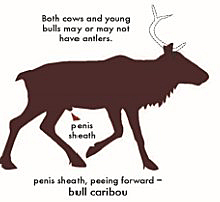
The guide focuses on the most practical and conclusive ways to identify caribou genders. Bull and cow caribou usually have differently shaped white rump patches; bulls have a narrower, heart shaped patch, while cows have a broader, rectangular shaped patch. When viewed from the side or rear, bulls should have visible genitalia – testicles in the rear and a penis sheath if viewed from the side. Cows must be viewed from the rear and usually show a dark vulva patch.
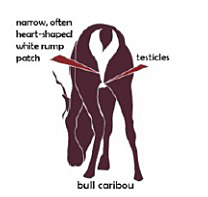
It is important to try to make a “positive identification,” looking for the presence, in addition to absence, of reproductive organs. For example, a cow’s vulva is not always obvious, leading some to mistake a cow as a bull when viewed from the rear. If viewing the animal from the side or rear is inconclusive, wait until the animal turns. Using a combination of characteristics, like the rump patch, antler growth, and absence or presence of genitalia, can be helpful when making a decision.
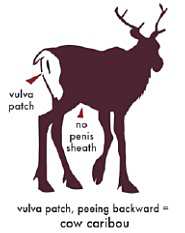
Identifying caribou gender does take time, patience, and usually, decent optics. It’s likely hunters will have to be a couple of hundred yards away or closer before a positive identification is possible through medium-power binoculars. This means hunting in a slower, more practiced fashion that allows time to get closer. However, taking the time and care to select bull caribou for harvest will protect the health of the herd in the long run, meaning generations to come can continue to use these animals as an important resource. And here are the links to caribou identification and quiz.
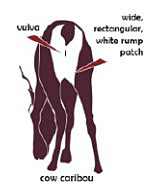
Subscribe to be notified about new issues
Receive a monthly notice about new issues and articles.
